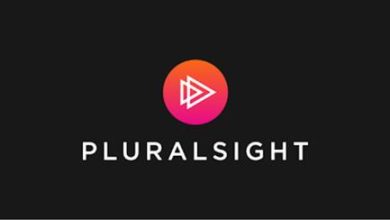Solid Principles For Clean Code Programming & Architecture


Free Download Solid Principles For Clean Code Programming & Architecture
Published 10/2024
MP4 | Video: h264, 1920×1080 | Audio: AAC, 44.1 KHz
Language: English | Size: 3.66 GB | Duration: 2h 40m
Master SOLID Principles for Clean Code Programming and Software Design and Architecture
What you’ll learn
Understanding and implementation of all five SOLID principles: Single Responsibility, Open-Closed, Liskov Substitution, Interface Segregation, and Dependency In
Identification of design smells and how to fix them using SOLID principles
Practical implementation of SOLID principles in object-oriented programming, specifically using C#
Understanding of related concepts such as cohesion, coupling, and decomposition in software design
Preparation for interviews and real-world application of SOLID principles in software development projects
Application of SOLID principles in a real-life case study of an Employee Management System (EMS) portal
Requirements
Basic Programming experience is required
Description
Master SOLID Principles for Clean Code and Software ArchitectureIn this course, you will master the SOLID principles of software design and software architecture to write clean code in C#. Designed for both beginners and experienced developers, this course covers the SOLID programming principles essential for building scalable, maintainable, and robust software.What You’ll Learn:SOLID Design Principles: Learn how the SOLID principles, originally introduced by Robert Martin in Agile Software Development: Principles, Patterns, and Practices, shape the foundation of modern software architecture.Real-World Application: See how to apply SOLID principles in C#, Java, and other object-oriented programming languages through practical examples and real-world case studies.Importance of SOLID: Understand why SOLID programming principles are critical for creating flexible, scalable, and clean code.Applying SOLID Principles: Learn step-by-step how to implement SOLID principles in real-life projects to ensure your software architecture is clean, modular, and future-proof.Topics Covered:Single Responsibility Principle (SRP)What is SRP in OOP languages like C# and JavaWhy SRP is a fundamental SOLID principle in software designHow to implement SRP to create more focused and maintainable classesOpen-Closed Principle (OCP)Understanding OCP in languages like C# and JavaHow OCP supports extensible and adaptable software architecturePractical examples of applying OCP in real-world scenariosLiskov Substitution Principle (LSP)What is LSP in OOP languages like C# and JavaWhy LSP is crucial for flexible and reliable codeHow to ensure LSP compliance in your codebaseInterface Segregation Principle (ISP)The role of ISP in designing lean and efficient interfacesWhy ISP is important for modular software architectureReal-world examples of implementing ISPDependency Inversion Principle (DIP)What is DIP and how it enhances your software architectureWhy DIP is a key component of SOLID programming principlesHow to use DIP in your projects for better modularity and decouplingDependency Injection (DI) and Inversion of Control (IOC)Implementing Dependency Injection (DI) with IoC containers like UnityUnderstanding the difference between DI, DIP, and IOCHow to use DI to improve your software’s flexibilityBeyond SOLID:In addition to the SOLID design principles, we’ll also cover other important programming concepts such as:DRY (Don’t Repeat Yourself)KISS (Keep It Simple, Stupid)GRASP (General Responsibility Assignment Software Patterns)YAGNI (You Aren’t Gonna Need It)Opportunity Cost PrincipleBig Design Up Front & Rough Design Up FrontSingle Source of TruthPrinciple of Least AstonishmentHands-On Case Study:You will put the SOLID principles into practice by building an Employee Management Portal. This real-world case study will guide you through implementing each SOLID principle as part of a complete software architecture. Even if you’re not familiar with C#, these SOLID programming principles apply across multiple languages like Java, jаvascript, Python, and more.By the end of this course, you’ll have a solid understanding of the SOLID principles, enabling you to write clean code and create robust software architecture. Plus, we’ll prepare you for common interview questions on SOLID principles, giving you the skills needed to succeed in software development roles.
Overview
Section 1: Introduction
Lecture 1 Introduction to SOLID Principles Course
Lecture 2 Why should you Learn SOLID Principles and Why this Course
Lecture 3 What is SOLID Principles
Lecture 4 Design Smells and Signs of Bad Design in Software Design and Architecture
Section 2: Case Study for SOLID Principles Illustrations
Lecture 5 Solid Principle Case Study Overview
Lecture 6 Case Study Code Setup
Section 3: Single Responsibility Principle SRP | SOLID Principles
Lecture 7 Single Responsibility Principle – SRP
Lecture 8 Defining Single Responsibility or Single Reason to Change
Lecture 9 Case Study Changes for Defining Responsbility
Lecture 10 Information Expert Principle – GRASP
Lecture 11 Decomposition
Lecture 12 Cohesion
Lecture 13 Coupling
Lecture 14 SRP Final Checklist for Implementation
Section 4: Open Closed Principle OCP | SOLID principles
Lecture 15 Open Closed Principle OCP | SOLID principles
Lecture 16 OCP Checklist
Section 5: Liskov Substitution Principle LSP | SOLID principles
Lecture 17 Liskov Substitution Principle LSP
Lecture 18 LSP in Real Life
Lecture 19 LSP Checklist
Section 6: Interface Segregation Principle ISP | SOLID principles
Lecture 20 Interfaces and Abstraction Concepts
Lecture 21 Implement Abstraction using Interfaces Part-2
Lecture 22 Interface Segregation Principle ISP
Lecture 23 ISP Checklist for implementation
Section 7: Dependency Inversion Principle DIP | SOLID principles
Lecture 24 Dependency Inversion Principle DIP
Lecture 25 Dependency Injection DI
Lecture 26 Inversion of Control IOC
Lecture 27 IOC-Case Study Changes
Lecture 28 DIP Implementation Checklist
Section 8: Common Software Application Design and Architectural Principles
Lecture 29 DRY Principle
Lecture 30 KISS Keep it Simple Stupid Principle
Lecture 31 YAGNI – You ain’t gonna need it
Lecture 32 Opportunity Cost Principle
Lecture 33 Occam’s Razor Principle
Lecture 34 Principle Of Least Astonishment
Lecture 35 Avoid Premature Optimization
Lecture 36 Rough Design Up Front – RDUF
Lecture 37 Single Level of Abstraction Principle (SLAP)
Section 9: Conclusion of SOLID principles Course
Lecture 38 Summary of Solid Principles
Lecture 39 Interview Questions Solid Principle
Lecture 40 Conclusion
Software developers at all career stages, from beginners to experienced professionals looking to enhance their design skills,Individuals about to start their journey in the software industry who want to learn best practices from the beginning,Current software industry professionals aiming to scale up and advance their careers,Developers seeking to improve their ability to design and architect quality, agile, and maintainable software,Programmers looking to prepare for technical interviews where SOLID principles are often discussed
Homepage
https://www.udemy.com/course/solid-principles-for-clean-code-programming-design-architecture/oshny.Solid.Principles.For.Clean.Code.Programming..Architecture.part3.rar.html
oshny.Solid.Principles.For.Clean.Code.Programming..Architecture.part1.rar.html
oshny.Solid.Principles.For.Clean.Code.Programming..Architecture.part2.rar.html
oshny.Solid.Principles.For.Clean.Code.Programming..Architecture.part4.rar.html
Fikper
oshny.Solid.Principles.For.Clean.Code.Programming..Architecture.part1.rar.html
oshny.Solid.Principles.For.Clean.Code.Programming..Architecture.part4.rar.html
oshny.Solid.Principles.For.Clean.Code.Programming..Architecture.part3.rar.html
oshny.Solid.Principles.For.Clean.Code.Programming..Architecture.part2.rar.html




